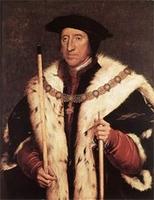 I thought I would follow up Blake Barbera's comment about the article on Domains of PR Practice.
I thought I would follow up Blake Barbera's comment about the article on Domains of PR Practice. An ancient domain of public relations practice is that of heraldry. In Britain, their recognition in 1420 came when the Royal heralds had a common seal and acted in some ways like a corporation. In 1484 they were granted a charter of incorporation by Richard III to become the College of Arms.
In the Middle ages, heralds represented the dominant coalition, providing a medieval service equivalent in many respects to the public relations practitioner of today. These days, under the The Earl Marshal, the Duke of Norfolk, the College organises extremely ancient and splendid ceremonies (parties have always been big in PR practice). In June each year at Windsor Castle is held the procession and service of the Sovereign and Knights Companion of the Order of the Garter. The State Opening of Parliament, usually in November, is an even more magnificent ceremony.
Even with its new Royal Charter (not to mention need for a new headquarters office) the Chartered Institute of Public Relations is not believed to have an eye for a merger with the College of Arms which, although a branch of the Royal household, is self-supporting and is located in an historic building (re-built after the Great Fire of London in 1670).
Despite Public relations' long pedigree (an example of practitioners is recorded by the Roman historian Florus who, in the time of Augustus reports “Thus even Scythians and Sarmatians sent envoys to seek the friendship of Rome. Nay, the Seres came likewise, and the Indians who dwelt beneath the vertical sun.”) the practice of public relations is still thought to have originated as a practice of an American psychologist Edward Bernays who practised in the 1920's or even earlier, Ivy Lee (who formed Parker and Lee in 1904).
Thus it is that when we think about public relations in the Relationship Value Model, we cast our net very wide indeed (and no doubt Colin Farrington with an envious reputations for growing the CIPR membership might even run a ruler over The College).
No comments:
Post a Comment